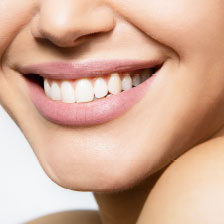 Dental bonding is a versatile cosmetic dentistry procedure that addresses various dental issues, offering patients a minimally invasive and cost-effective solution to achieve a brighter, healthier smile. This procedure involves the application of a tooth-colored resin material to the surface of the tooth, which is then sculpted, hardened, and polished to blend seamlessly with the natural teeth. In this blog, your team at Grinnell Street Dentistry will break down the different dental issues that can be effectively addressed through bonding.
Dental bonding is a versatile cosmetic dentistry procedure that addresses various dental issues, offering patients a minimally invasive and cost-effective solution to achieve a brighter, healthier smile. This procedure involves the application of a tooth-colored resin material to the surface of the tooth, which is then sculpted, hardened, and polished to blend seamlessly with the natural teeth. In this blog, your team at Grinnell Street Dentistry will break down the different dental issues that can be effectively addressed through bonding.
Repairing Cavities
One of the primary uses of dental bonding is to repair tooth decay and cavities. When a tooth develops decay or a cavity, it can compromise both the aesthetics and functionality of the tooth. Bonding allows dentists to fill in these areas of decay with a tooth-colored resin material, restoring the tooth’s structure and preventing further decay. By bonding the affected areas, patients can maintain the integrity of their teeth while achieving a natural-looking result.
Correcting Cosmetic Imperfections
Cosmetic bonding is an excellent option for correcting various cosmetic imperfections, such as chipped, cracked, or discolored teeth. Whether the result of trauma, poor oral habits, or natural wear and tear, these imperfections can detract from the overall appearance of the smile. With cosmetic bonding, dentists can reshape and rebuild damaged teeth, seamlessly blending the bonded material with the surrounding natural teeth. This process not only improves the aesthetics of the smile but also enhances self-confidence and self-esteem.
Closing Gaps
Another common issue addressed by tooth bonding is the closing of spaces and gaps between teeth. These spaces can develop due to genetics, gum disease, or the natural alignment of the teeth. While orthodontic treatments like braces or Invisalign are often used to address more significant alignment issues, minor gaps can be effectively closed through bonding. By applying composite resin to the sides of the teeth, dentists can narrow spaces and create a more uniform and harmonious smile.
Protecting Exposed Roots
For patients experiencing gum recession or enamel erosion, composite bonding can help protect exposed tooth roots and sensitive areas of the teeth. By applying a thin layer of composite resin to the affected areas, dentists can shield the underlying tooth structure from further damage and reduce sensitivity to hot, cold, and acidic foods and beverages. This added layer of protection not only improves the patient’s comfort but also preserves the health and integrity of the teeth in the long term.
Do You Have Issues That Bonding Can Address?
In conclusion, bonding is a versatile and effective treatment option for addressing a wide range of dental issues, from repairing decay and cavities to enhancing the aesthetics of the smile. Call Grinnell Street Dental in Sheridan, WY, at 307-672-7567, for a consultation to determine whether bonding is the right solution for individual dental concerns.







